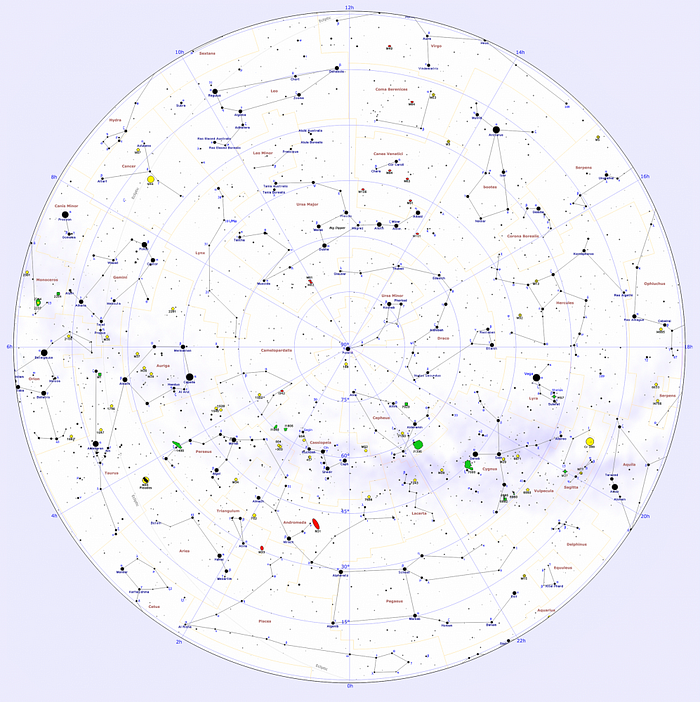45 — Year of Reconstellation
My year in review
I’ll come back to this but for now just a quick definition of a word that doesn’t exist that I’ll be using a lot:
Reconstellate: v. the potentially foolish act of dismantling various constellations (not only of stars but also of identity and worldview) in order to create space for new constellations to be formed.
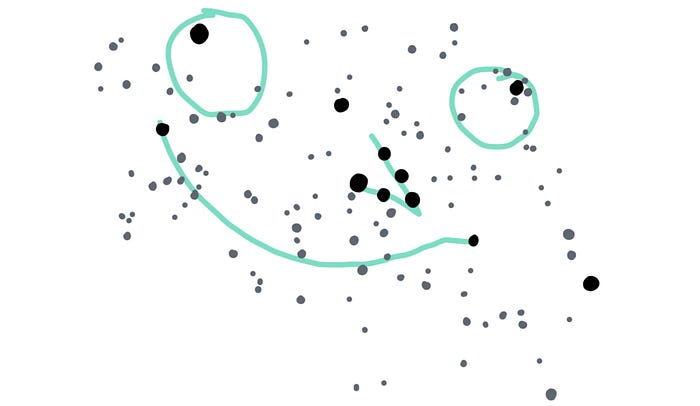
Connecting dots from the past
I’ve reviewed my life around the time of my birthday now for 15 years. It’s always a bit of a challenge to review my life as it’s happening… it forces me to create a narrative of sorts even as I am a character within the narrative. And sometimes it’s possible to see things repeat in weird ways. For example, three years ago I was struggling with a toddler, a full-time job, and a contract to write a book about productive disagreements in an era of Trump chaos. Two years ago I left my tech job after a long string of tech jobs to recover from burnout and to finish and promote the book. Then last year the pandemic hit and the world turned upside down. Amongst many other big shifts, Kellianne and I decided to separate and ultimately get divorced, and I moved into my own place sharing 50% custody of our kids. New ideas are sprouting. A new relationship is blooming. The mottos I had for myself during these three years were “Dig deeper” in 2018 as I was reaching my breaking point, “All in and with the flow” in 2019 as I burned out just as the world toppled over, and “Year of the Amateur” in 2020 as the pandemic, solitude, and heavy resetting of everything engulfed us.
Looking back further, I noticed that there was a similar progression of burnout and collapse in my 31st-34th years (2007–2010). 14 years ago in 2007 “Double Down” was my motto as my bar/art gallery struggled to stay alive, 13 years ago in 2008 I had “No Problem” as the bar closed, I got married, and the financial crises unfolded in the world. Then 12 years ago in 2009 my motto was “Frugal to the Max” as the quiet settled after the world economic collapse… and new companies germinated and I prepared to become a parent for the first time.
I wonder if I can look to 2010, 11 years ago, for a personal historical rhyme to this coming year in some ways. That year the motto was “Cultivate the Core” and Niko had just been born, I was working on 750 Words, and was just about to start my final startup, Health Month. At this moment I don’t feel quite as bold as I did then… perhaps a symptom of having two kids and still working on and maintaining 750 Words 10 years later. BUT. I do feel a stirring of energy and excitement for life and living as a result of emerging from the tail end of a long pandemic. (I just pictured the pandemic as a giant snake that has pooped us out — discombobulated, eyes not adjusted to the sun, sort of gross and slimy — and that image WORKS for me!)
The loose rhyming pattern of these 4 year progressions seems to be:
- Reach peak effort/burnout but rally for one last big push.
- Realize that things need to change, accept that, and dive into the change.
- Burn out, recover, and take stock of what is happening while listening for what is coming next.
- Learn from the past and begin building again.
Of course, the goal is not to repeat this cycle, because burning out is pretty terrible and unhealthy. But the lesson of burnout isn’t that I shouldn’t think about building and participating in life and the world again once things have a chance to heal with time. A bit wiser, maybe.
I’m not going to start any new businesses this year or have any more children. I’m quite happy with the business I have, 750 Words, and with my children. This cycle isn’t about building an idea or career or family or business from scratch, but making the existing incarnations of these stronger, helping them grow, and giving them space and time and love to become their own best versions of themselves. There’s a personal element in this too — I may be turning 45 years old but I’m not dead yet!
Given the stress and burnout and all the coping mechanisms that I’ve developed to self-medicate myself these last few years, and my only life goal of riding my bike around the block on my 100th birthday, there’s ample opportunity and incentive for me to continue finding new, healthier, more integrated, and authentic ways of living that allow me to enjoy life for at least 65 more years.
Deconstellating & reconstellating
I’m interested in dismantling / disconnecting dots / deconstellating many of my largest and most basic patterns and assumptions about my relationship to nature, my own health, and my ability to make sense of the world. With those atomic elements in front of me like Lego pieces after a storm, I hope to build something new that feels more stable and trustworthy of the ground beneath my feet.
I think some deep brackishness exists in the tug of war between the independent pieces (stars, events, individuals, etc) and the constellations (narratives, meanings, patterns).
Reconstellating is not about wiping out and starting over — it’s more of a dismantling / shaking of an existing stake pattern that helps me see the parts within the whole again, and to allow space and time to wiggle/shift/re-imagine how those pieces might fit together differently. A reconstellation re-uses the same stars, but makes it possible to see something in them that better fits the moment. And this new constellation will also eventually lose coherence and become fodder for yet another reconstellation again at some point.
The process of reconstellation is like a brackish, two-way river that is constantly flowing towards a salty state of falling apart and a fresh state of coming together. It never fully reaches either.
Raw materials & symbol languages
In the last couple years I’ve become increasingly interested in archetypes, mythologies, and fables that speak to enduring themes of our existence. As much for their structure and colorful histories as their content and practical uses. It started with Tarot, the I Ching, and astrology. These are examples of old, evolved frameworks that map archetypes to the daily practice of everyday living. There are recurring themes of birth, adolescence, growth, mastery, and obsolescence. They use striking imagery and cultural reference points that speak to our existing stories and myths about the universe, nature, society, and governance. They provide convenient hooks for having meaningful conversations with each other, even in the light of day without need for alcohol or drama as an excuse to discuss these heavy things.
I’ve been following this breadcrumb trail of symbol languages and stories and archetypes back in history to understand more about how they were originally conceived, and these paths always lead back to awe-inspiring feats of collective storytelling, engineering, and culture-building. One interesting observation I’ve noticed is that many of the paths seem to eventually lead back to the Sumerian civilization of roughly 4,100–1750 B.C.E. They were some of the earliest known architects of the calendar, the zodiac, and many of our myths. They may have been the first to use our familiar base-60 system for measuring time (60 minutes in an hour, 60 seconds in a minute), space (360 degrees in a circle), seasons (12 or 13 lunar-based months in a year, each with feasts and rituals fit for that time of year). Much of what they came up with was picked up and extended by the Babylonians, followed by Jewish, Islamic, and Christian cultures. In a time of divisiveness and chaos, it’s been nice to be reminded that we do all have common roots in history.
I like to think about this long period of time where the calendar and the stars and the stories in the constellations and the feasts and rituals around the year were all obviously connected into a holistic system for seeing and feeling connected to the world. As I emerge from the tail of the long pandemic snake — blinking, confused, anxious, and lost — these threads of connection with the moon, stars, sun, seasons, stories, and our shared history as a human race on this planet all help me feel grounded and connected to what is happening now, here, with us.
These days we can get free lunar calendars and star map apps on our phones and know when the next new or full moon is, or the next solstice or equinox, and know that it’s the same celestial objects and occurrences that the Sumerians and the Babylonians and everyone who followed also looked at and studied.
I can find the North Star, Polaris, and know that it’s the end of the handle of the Little Dipper, or the tail of Ursa Minor, and think about the stories that were told during a time before anybody knew that Polaris was a star like our own Sun, but much bigger. Polaris is a practical star to know about if you’re sailing in the northern hemisphere and need to know which way is north. For this very practical reason, as well as the fact that they hadn’t yet invented television and video games to entertain themselves by, many of the constellations we know about today were “written” thousands of years ago by constellating the stars. This meant drawing characters and stories onto the dotted canvas of the starry night and passing them down to each coming generation like a well-loved Netflix password.
As I’ve learned about these stories about Orion and the Great Bear and the zodiac throughout the years, I’ve found them both interesting and unsettling. It’s impossible to ignore the fact that the stories in the constellations include frequent casual stories about rape, murder, and other blatant abuses of power. When I look to the sky and see these stars, and hear these stories, they don’t necessarily feel like a reflection of my own biggest questions, stories, and guesses about the world, they feel a bit like watching an old movie that once spoke to a different audience who had different problems and different tools for solving them.
It’s the same way I feel when I watch Marvel movies, to be honest. Interesting and highly entertaining, yes, but also unsettling in their obsession with framing everything in violence, their unfailing emphasis on aggressive heroic acts as the only way to resolve problems of every kind, and blatant dismissal of the damage to everyone and everything around them in the process.
And yes it’s the same way I feel when I think about Bitcoin, and colonizing Mars, and working 80 hours a week to help venture-funded companies make their founders rich. It’s how I feel after being digested by a culture intent on productivity and individual achievement and resume-building. All of it is increasingly difficult to relate to, or to participate in.
So, minding my own rhyming cycle with burnout, recovery, and renewal, my idea this year is give myself space and time to reconstellate the sky (and my soul) with stories that reflect my own values and that make me feel connected to other people, projects, and ambitions that are feeling similarly lost and unrepresented in the broad strokes of today’s world and culture. I have no intention of diminishing or disrespecting the past, but think it’s also possible to take the spirit of the constellations and re-enact the process of using them to capture and share meaning stories. They can be about who we are today. And I want to do this as an invitation for others who might be interested in re-enacting this in their own way. The night sky is big enough for all of us.
Here’s the inaugural test balloon. My first reconstellation, Ursa Minor. That’s a pretty easy star to find in the sky, and seems like as good of a place to start as any. So I will!
How to reconstellate the sky:
- Disconnect the dots / erase the lines between constellations that we’ve inherited.
- Look at the pieces as they are separate from the whole: stars and planets and other celestial objects; pieces of our own lives (our environments, our beliefs, our work/routines, and our identities).
- Relax into this recently freed space and entertain new ways to reconstellate all of this deconstructed raw material into both old and new stories and meanings.
- Ask new questions and start new conversations.
Reconstellation #1
Ursa Minor becomes The Pinecones. This being the first constellation — the one attached to the North Star, Polaris — I think the Lodgepole Pine is a perfect symbol for holding up the night sky. They’re tall, straight, uniform trees that have been used by indigenous people for a long time to build dwellings and other structures. Their inner bark is nutrient rich and can be used to make bread; their needles make a good tea; their resin can be used as a base for medicines treating muscle pain and colds. They have a quiet and humble majesty to them. Additionally, the pinecones from these trees are sealed tight and don’t open and release their seeds unless activated by heat — like a fire. As a result, these trees have become reliant on the natural forest cycles that include drought and fire to reproduce. You can say that they grow from the ashes of the past if you wanted to be dramatic (and I sorta do). As I begin this new cycle of reconstellation, they’re a good reminder that cycles of destruction and creation are linked, and each one always naturally leads into the other.
Since this my the first new constellation, I decided to forego the usual connect-the-dots style constellation and instead allow each star to be a complete mini-constellation pinecone in itself, while also part of a set of peer pinecones, and the parent of a new set of trees when the next fire comes along and opens them up. They exist in the brackish, primordial, celestial goo state that flows back and forth between star-likeness and constellation-likeness.
The pinecones we can see within this constellation on any given night are those that have caught fire and are opening up, birthing constellations throughout the rest of the night sky.
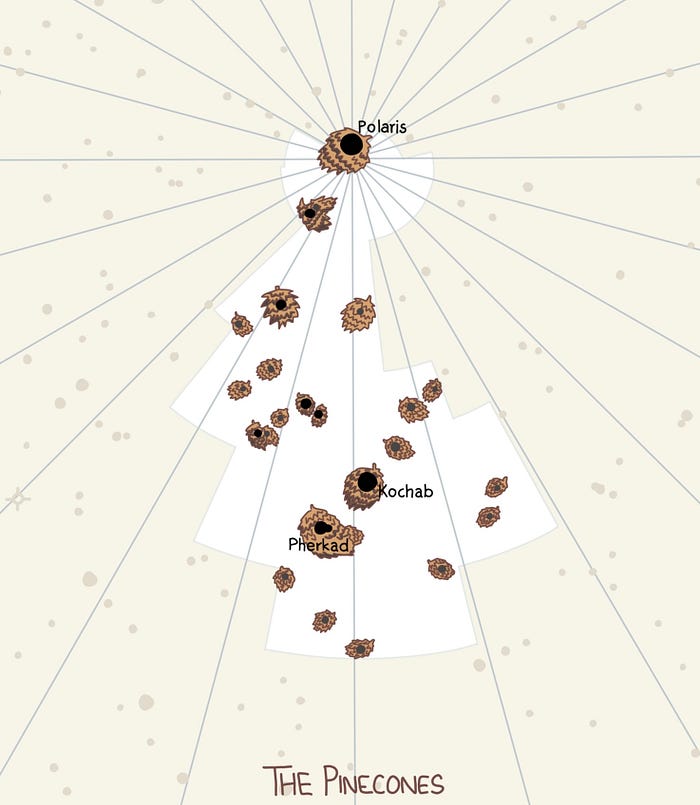
Ask new questions
- If a fire is a time when core beliefs and assumptions about the world are challenged or completely toppled over: Is there a fire happening right now? Was there a fire recently? Has there been drought that might indicate a fire in the near future?
- What are your lodgepole pines? If they were burned down, what might grow from their seeds?
- What would you build with what you have in front of you today even if you knew it would be eventually lost?
History

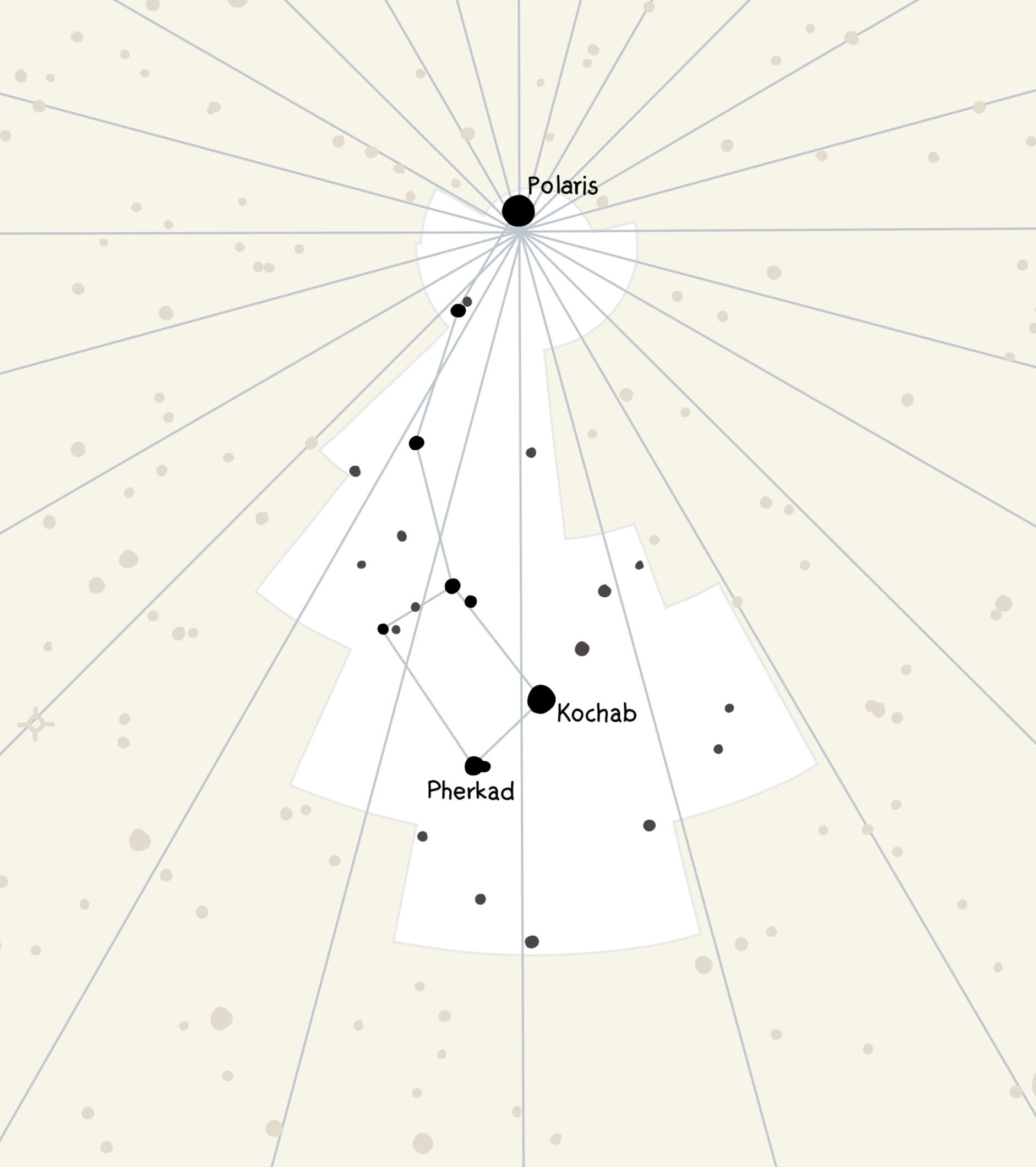
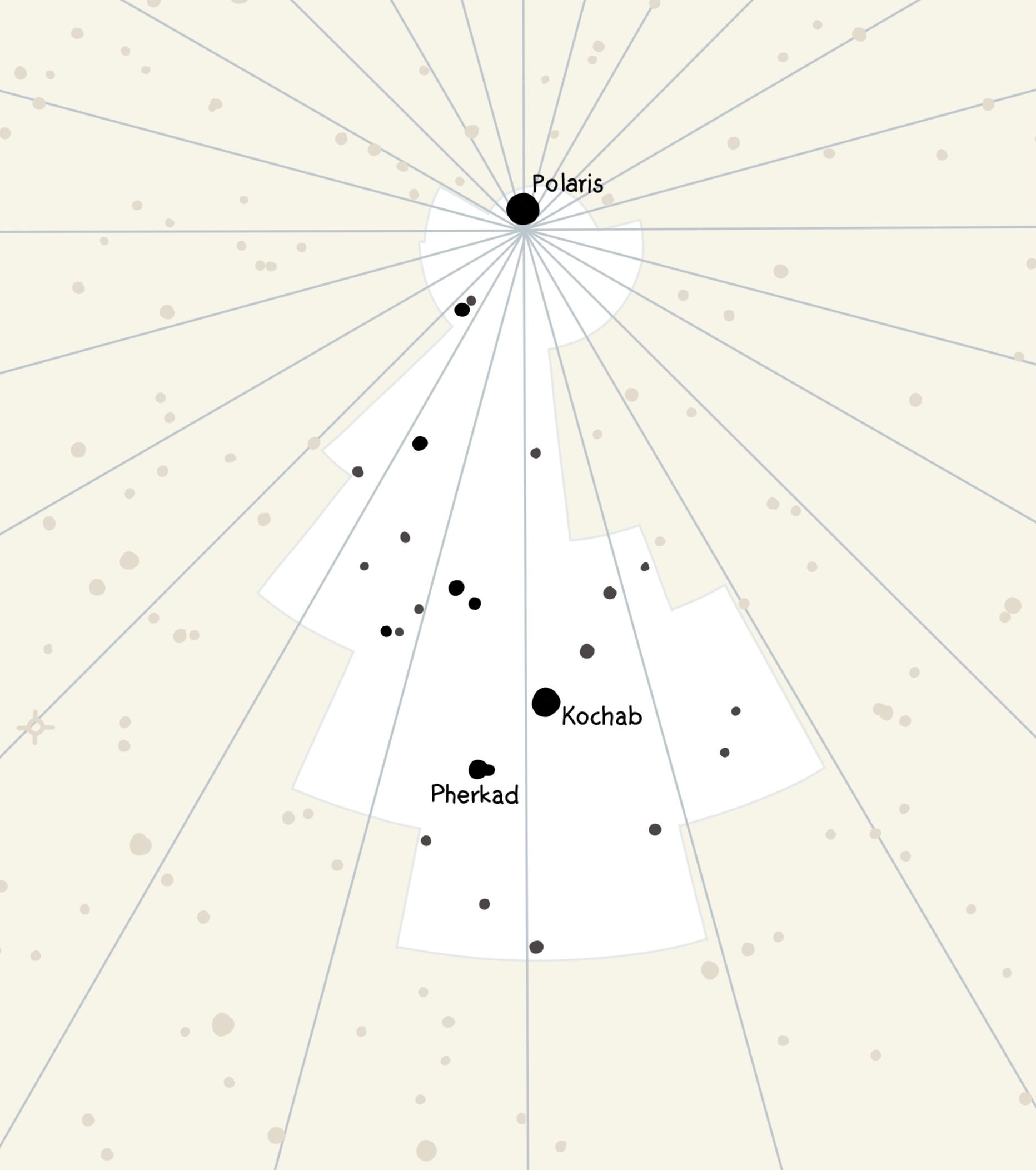
Past associations, etymology, notes
Related to:
- The Chimera (reverse polarity)Cynosura: "dog's tail" in Greek, became cynosure which means "guiding star" in EnglishLittle Dipper, Wagon/Wain, Plow, CoffinLittle Bear / Lesser Bear:
- One of the nymphs, Ida, who hid Zeus from Kronos when he was a baby.
- In a different story, Arcas (son of Zeus and Callisto) was turned into a little bear along with his mother by Hera.
- It never dips below the horizon and is visible year-round. Apparently Hera did this as punishment so they would not be able to drink water.
- Long tail stretched out because of spinning around the pole for so long.The North Star:
- Polaris, pole star, polar star. The northern axis of the Earth points to it.
- A navigation tool for sailors and travelers
- Top 50 bright star
- Will be closest to true north in 2105.Pherkad (al-farkadan: two calves) and Kochab (kaukab: star) were also known as Guards or Guardians of the Pole and imagined by Arabs as two calves.Personal:
- Yin to The Chimera’s Yang
- Divergent, receptive, patience, quiet, still
- The Star card in tarot (openness, faith, longing)
- The 2nd hexagram of the I Ching: earth over earth (supportive power)
Reconstellating the other 87…
Who knows how far this will go. I’ll be keeping track here.
